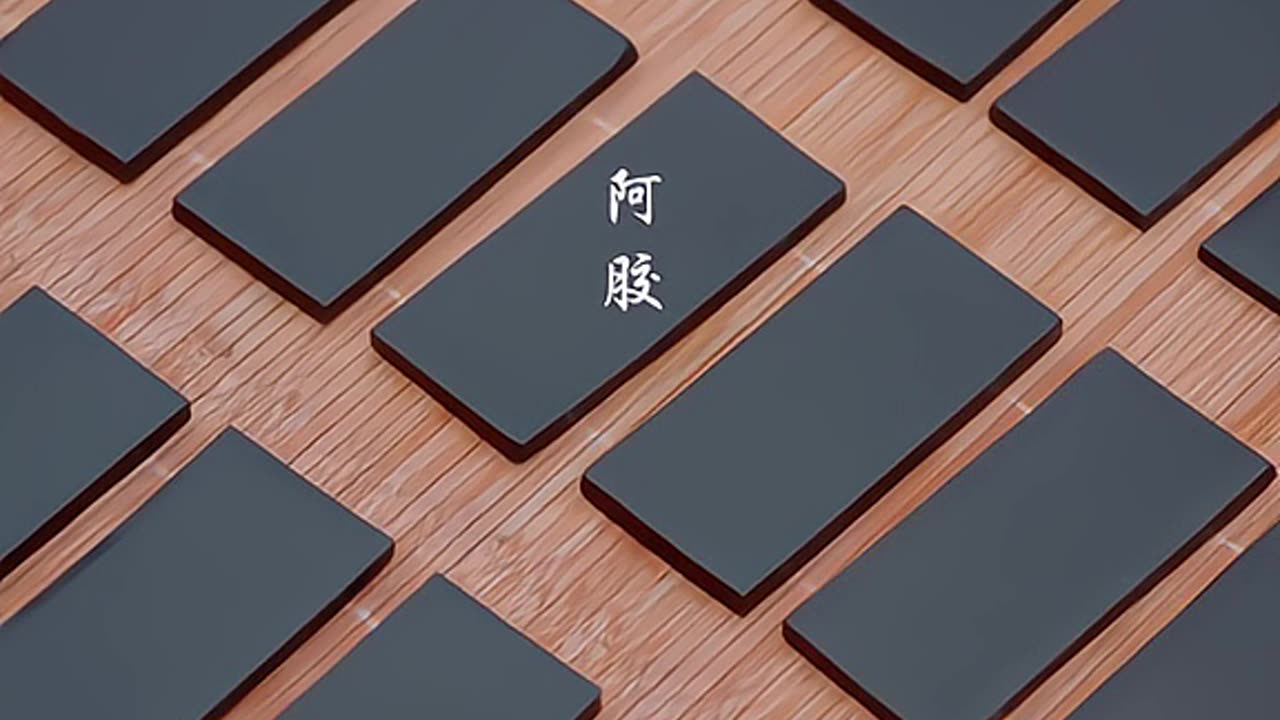Premium Only Content

Making Gelatin From 2000 Year Old Horse Skin (Traditional Chinese Medicine)
The earliest record of medical gelatin is found in the silk text Wu Shi Er Bing Fang (《五十二病方》Prescriptions for Fifty-Two Diseases) ( Figure 5 ). 7 Dating from the western Han dynasty, the scroll was excavated from the tomb of Ma Wang Dui. Since Wu Shi Er Bing Fang is thought to contain medical knowledge that predates the First Emperor of Qin (246–210 BCE), the use of medical gelatin can be traced back to the Warring States period. Unfortunately, there is little medical literature from the Warring States period and earlier; therefore, it is impossible to clarify when the use of medical gelatin began. In early China, medical gelatin was not extracted from donkey hides. There are six sources of gelatin listed in the Records of Skill Examination: deer, horse, cow, rat, fish, and rhinoceros, but donkeys are not mentioned. 6 At that time, donkeys had just been introduced to the Yellow River plain, but gelatin was not widely extracted from donkey hides due to the scarcity of donkeys.
There are two types of medicinal gelatin, namely E Jiao and Bai Jiao (白胶), listed in the Shen Nong Ben Cao Jing (《神农本草经》Shennong Classic of Medical Materia) ( Fig. 6 ). The book is thought to have been composed around the first to second century AD, and the gelatin is found under the high-grade medicine group. The herbal text does not mention any differences between the two types of gelatin and describes their taste and properties as identical. Both types of gelatin are sweet (甘), have neutral medicinal properties (中) and have similar medical benefits. This is the first time the term "E Jiao" has appeared in Chinese literature. "E" comes from the name of a place. Both E Jiao and Bai Jiao are used to prevent miscarriage and stabilize the condition of unborn babies and pregnant women. In addition, E Jiao can treat abnormal uterine bleeding while Bai Jiao can treat amenorrhea and infertility. Pregnant women are prone to anemia because blood is diverted to supply blood to the fetus during pregnancy.Therefore, E Jiao is the right medicine to increase blood during pregnancy.
Blood clotting involves the formation of a fibrin clot that stops bleeding, creates a scab, and repairs wounds. This function of blood may remind us of the description above of the carriage being repaired with animal glue. It is natural that early societies associated animal glue with blood and considered it a substitute for blood. This may be related to the doctrine of signatures. The adhesive properties of gelatin, which help to make structures stable and solid, may have been associated with stabilizing the fetus in the womb to prevent premature birth, treating abnormal uterine bleeding, and facilitating blood flow. Ming Yi Bie Lu (《名医别录》Records of Miscellaneous Famous Doctors), who first defined E Jiao and Bai Jiao as made from cowhide and horn respectively, also stated that E Jiao was good for relieving fatigue and was suitable for treating people with weak limbs, perhaps because it was believed to have strengthening effects for muscles, bones, and tendons.
It is important to note that the use of animal gelatin in medicine was almost exclusively in China. Although a German scholar, Dr. J. Liesegang, mentions the historical use of animal gelatin in ancient Egypt and Greece in his thesis The Gelatin in Medicine, there is no description of its medical use in the West until the 19th century. The use of gelatin to facilitate the swallowing of medicines was discovered by a French pharmacist, François Mothes, in the 19th century and is still widely used today. 9 However, this application assumes that gelatin itself has no beneficial effects. In 1896, A. Dastre and N. Floresco gave intravenous injections of gelatin solution to dogs as a treatment to promote blood clotting without thrombosis. 10 This was the earliest use of gelatin in medicine in the West.
Gelatin has long been consumed in the West, although there are few records of its culinary use. Aspic, made by boiling fish heads, was introduced as a high-class dish in a Baghdad cookbook around the 10th century. 11 The modern use of gelatin for desserts began in the 18th century, when mass production became possible. Furthermore, the medicinal use of animal gelatin is unknown. Its use is almost exclusive to China, Japan, and other East Asian countries.
-
 LIVE
LIVE
Fresh and Fit
1 hour agoAfter Hours w/ Girls
5,023 watching -
![[F EM UP Friday] Take # 2 [Destiny 2] Lets Kick Some A$$! #RumbleTakeOver](https://1a-1791.com/video/s8/1/c/W/7/1/cW71u.0kob-small-F-EM-UP-Friday-Take-2-Desti.jpg) LIVE
LIVE
CHiLi XDD
2 hours ago[F EM UP Friday] Take # 2 [Destiny 2] Lets Kick Some A$$! #RumbleTakeOver
1,340 watching -
 LIVE
LIVE
ItsMossy
8 hours agoHALO WITH THE RUMBLERS (: #RUMBLETAKEOVER
621 watching -
 LIVE
LIVE
INFILTRATION85
1 hour agoHi, I'm INFILTRATION
1,417 watching -
 LIVE
LIVE
GuardianRUBY
3 hours agoRumble Takeover! The Rumblings are strong
670 watching -
 LIVE
LIVE
Etheraeon
10 hours agoWorld of Warcraft: Classic | Fresh Level 1 Druid | 500 Follower Goal
641 watching -
 LIVE
LIVE
VapinGamers
2 hours ago $1.47 earned🎮🔥Scrollin’ and Trollin’: ESO Adventures Unleashed!
435 watching -
 LIVE
LIVE
a12cat34dog
3 hours agoGETTING AFTERMATH COMPLETED :: Call of Duty: Black Ops 6 :: ZOMBIES CAMO GRIND w/Bubba {18+}
145 watching -
 LIVE
LIVE
NubesALot
6 hours ago $1.13 earnedDark Souls Remastered and party games
359 watching -
 LIVE
LIVE
GamersErr0r
17 hours ago $0.64 earnedOverwatch 2
210 watching